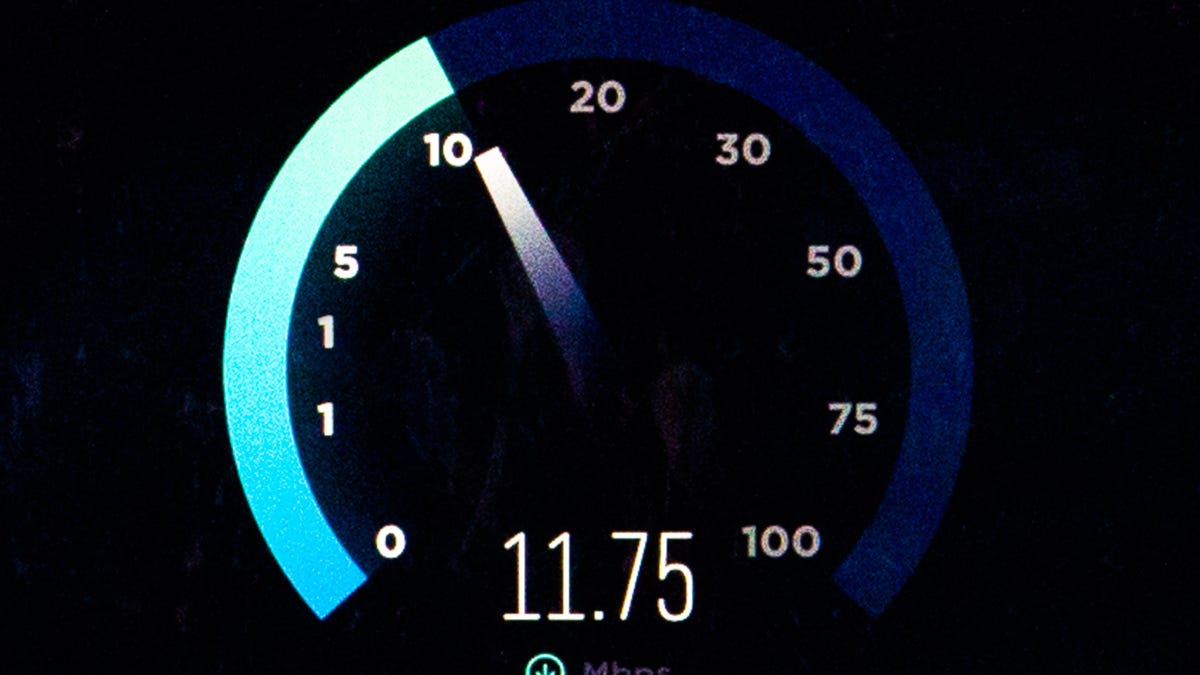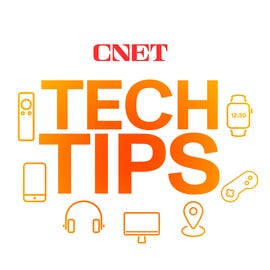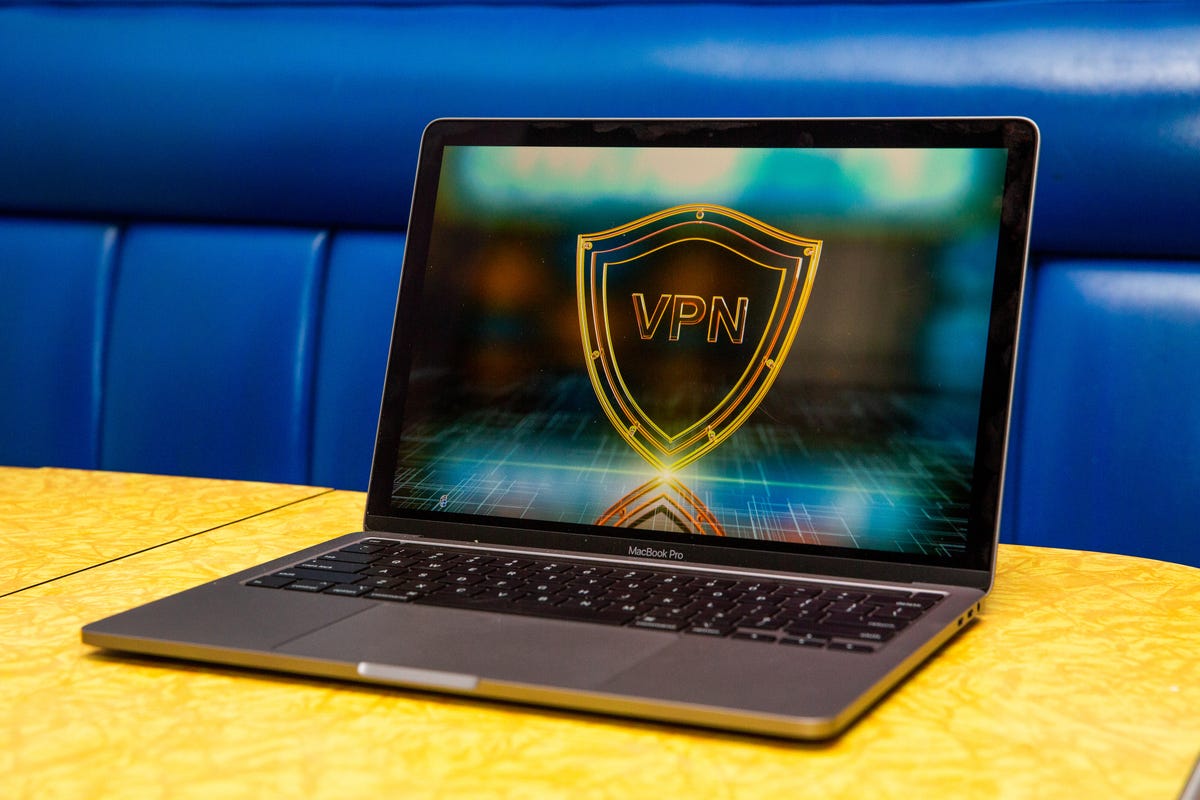Technologies
VPN Slowing You Down? Try These Steps to Speed Things Up
A VPN can cut your internet speed in half, which can be a real buzzkill if you’re gaming or streaming. Here’s how to speed things up.

Let’s face it: Using a virtual private network will slow down your internet — often by 50% or more.
It’s the nature of how VPNs work, and there’s really no way around it. However, there are a few things you can try to get the fastest possible speeds out of your VPN connection.
VPNs add a layer of encryption to your internet connection while routing your traffic through a secure server in a location of your choosing. This process is the main reason behind the speed loss. It takes time to encrypt and decrypt your traffic and for your data to make the round trip to the VPN server and back to your device.


Other factors can also have a hand in slowing your connection speeds, such as the VPN protocol you’re using or how many other people are using the same VPN server you’re connecting through.
The speed hit may be virtually imperceptible for normal internet use when you use a fast VPN, but you’ll want all the speeds you can get for data-heavy activities like gaming, streaming or video conferencing. A delay of even a few milliseconds can mean the difference between glory and failure in your online game. And slow VPN speeds can result in a ruined video streaming experience, spoiled by constant buffering and a heaping dose of pixelation. And if you’re using a VPN while on a Zoom call, you’ll want to do whatever you can to maximize your VPN speeds to ensure the call goes smoothly and doesn’t drop out.
If your VPN isn’t as fast as you need it to be, here’s what you can do to speed up your connection.
Read more: The Best VPNs, Tested and Rated
7 ways to improve your VPN speeds
Connect to a server closer to your physical location
Generally speaking, the closer the VPN server is to your physical location, the faster your connection speeds should be. Your traffic will have a shorter physical distance to cover when it’s routed through a VPN server that’s close by rather than one that’s halfway across the world. If you’re in Boston, your VPN connection should be a lot faster if you connect to a VPN server in New York City or Montreal than one in Sydney or Tokyo, for example.
This won’t always be practical if, say, you want to stream content from a specific country or access a gaming server from a particular location. But when you need a faster connection, try connecting to a few different VPN servers close to where you’re physically located and see which ones yield the fastest speeds. Some VPNs will have a speed test feature built into their apps, but you can always use a speed testing website like Ookla Speedtest to check the speed of your connection.
If you’re looking for a VPN with tons of server locations, try ExpressVPN, which offers servers in 160 locations across 94 countries — so you’re bound to find a few relatively close to where you are.
Connect to a server that isn’t overloaded
When too many people are using a single VPN server, the server can get overloaded and your connection speed can take a hit. Some VPN providers display the current server load on their servers either in the app itself or on the website. If you choose one with a lighter load, you’ll generally achieve faster speeds. If your VPN provider doesn’t display the current load on its servers, try connecting to a few different ones to see which gets you the fastest speeds. Sometimes, it just takes a little trial and error.


Your VPN will lower the speed of your connection, but you can try to minimize that hit.
Sarah Tew/CNETTry connecting via a different VPN protocol
A VPN protocol is a set of instructions between the VPN app on your device and the VPN server that determines how the secure connection is established. There are various VPN protocols and most providers give you the ability to choose between a few different options. Different protocols have different advantages and disadvantages in terms of speed and security, so if you connect via one VPN protocol rather than another, you can potentially boost the speed of your VPN.
Today, the gold standard VPN protocol is OpenVPN. It is the most battle-tested protocol, and it offers a nice combination of speed, stability and security — which is why many VPNs use OpenVPN as their default protocol. More and more VPN providers are now also offering newer VPN protocols like IKEv2 and WireGuard that promise faster speeds alongside excellent security. And some have even developed proprietary VPN protocols like ExpressVPN’s Lightway and NordVPN’s NordLynx that claim to offer the best of both worlds.
Switching to one of these other protocols, if offered by your VPN provider, can yield you faster connection speeds through your VPN. Just be aware that — though their security appears to be solid — these protocols haven’t been as thoroughly tested in the wild as OpenVPN, so they shouldn’t be your first choice for critical VPN use.
If you prefer to use OpenVPN exclusively, use UDP rather than TCP to get the best speeds. While TCP is typically the more stable option, it tends to be slower than UDP because it needs to send data packets in the right order and will wait for confirmation of receipt from the recipient prior to sending the next packet. UDP isn’t concerned about the order in which it sends data packets or getting any acknowledgment that they were received, so it tends to be much faster and more efficient, but less stable.
Most VPN apps allow you to change the protocol you connect through in their settings section, so try playing around with the protocol settings to see which ones get you the fastest speeds.
Enable split tunneling if available
If your VPN provider offers a split-tunneling feature, then try enabling it to see if you can boost your VPN speeds. Split tunneling allows you to send only the traffic you want through your VPN connection, while sending the rest unencrypted through your regular internet connection.
For example, if you’re using your VPN for streaming, you can allocate just your streaming traffic to go through the VPN, which won’t slow down your online gaming. This can help optimize your VPN speeds for certain activities, because all the excess traffic you don’t need running through your VPN won’t burden your bandwidth.
Use a wired connection
Using a wired connection will typically be faster than using your Wi-Fi. Chances are you’ve got several devices connected to your home Wi-Fi network all at the same time — devices that are all sharing and competing for resources on the same wireless channel. This can result in an unstable internet connection and, therefore, slower speeds. If you have the proper equipment, try establishing a wired connection by hooking your computer up directly to your router via ethernet cable and then connect to your VPN.
Close unnecessary apps running in the background
If you have apps running in the background that you’re not using, they could be taking up resources on your machine and slowing your connection. Take a minute to check if anything’s running in the background that you’re not using and close those processes. By clearing up potential bottlenecks like this, you might notice a faster connection.
Restart your router and other devices
When was the last time you restarted your devices? Just like anything else, tech like your computer and router occasionally need a little R&R. When you reboot your computer, you’ll give it a needed refresh, free up some RAM and get it working optimally. So, as cliche as it sounds, try turning it off and back on again, then see how your VPN speeds improve as a result.
Looking for more VPN info? Check out our other coverage:
Technologies
Were You ‘Tricked’ Into an Amazon Prime Subscription? You Might Be Owed Part of a $2.5B Settlement
Consumers who were «tricked» into a Prime subscription and unable to cancel could see a payout. Here’s who qualifies, and how much you might receive.

Amazon used to make it easy to sign up for a Prime subscription — but very difficult to cancel. From tricky shipping options to Prime Video, plenty of customers wound up with a subscription they didn’t want, and now Amazon is paying the price. In September, the US Federal Trade Commission dropped a massive $2.5 billion settlement on the company for its deceptive subscription tactics.
This isn’t just a slap on the wrist. A whopping $1.5 billion is earmarked to refund eligible subscribers, with the rest serving as a civil penalty. Amazon is now legally required to provide a clear, obvious option to decline Prime, making it as easy to leave the service as it is to join.
Amazon isn’t admitting to any shady behavior. «Amazon and our executives have always followed the law, and this settlement allows us to move forward and focus on innovating for customers,» Mark Blafkin, Amazon senior manager, said in a statement. «We work incredibly hard to make it clear and simple for customers to both sign up or cancel their Prime membership, and to offer substantial value for our many millions of loyal Prime members around the world.»
Don’t miss any of our unbiased tech content and lab-based reviews. Add CNET as a preferred Google source.
Why did the FTC file a lawsuit against Amazon?
The FTC filed suit against Amazon, accusing the company of using «dark patterns» to nudge people into Prime subscriptions and then making it too hard to cancel. The FTC maintained Amazon was in violation of Section 5 of the FTC Act and the Restore Online Shoppers’ Confidence Act.
«Specifically, Amazon used manipulative, coercive or deceptive user-interface designs known as ‘dark patterns’ to trick consumers into enrolling in automatically renewing Prime subscriptions,» the FTC complaint stated.
Who’s eligible for Amazon’s payout?
Amazon’s legal settlement is limited to customers who enrolled in Amazon Prime between June 23, 2019, and June 23, 2025. It’s also restricted to customers who subscribed to Prime using a «challenged enrollment flow» or who enrolled in Prime through any method but were unsuccessful in canceling their memberships.
The FTC called out specific enrollment pages, including Prime Video enrollment, the Universal Prime Decision page, the Shipping Option Select page and the Single Page Checkout. To qualify for a payout, claimants must also not have used more than 10 Amazon Prime benefits in any 12-month period.
Customers who signed up via those challenged processes and did not use more than three Prime benefits within one year will be paid automatically by Amazon within 90 days. Other eligible Amazon customers will need to file a claim, after Dec. 23, and Amazon is required to send notices to those people within 30 days of making its automatic payments.
Customers who did not use a challenged sign-up process but instead were unable to cancel their memberships will also need to file claims for payment.
How big will the Amazon payments be?
Payouts to eligible Amazon claimants will be limited to a maximum of $51. That amount could be reduced depending on the number of Amazon Prime benefits you used while subscribed to the service. Those benefits include free two-day shipping, watching shows or movies on Prime Video or Whole Foods grocery discounts.
Customers who qualify for the payments should receive them by Dec. 24.Customers outside the US aren’t eligible for the payout.
Technologies
Today’s Wordle Hints, Answer and Help for Nov. 27, #1622
Here are hints and the answer for today’s Wordle for Nov. 27, No. 1,622.

Looking for the most recent Wordle answer? Click here for today’s Wordle hints, as well as our daily answers and hints for The New York Times Mini Crossword, Connections, Connections: Sports Edition and Strands puzzles.
Today’s Wordle puzzle is a little tricky. If you need a new starter word, check out our list of which letters show up the most in English words. If you need hints and the answer, read on.
Today’s Wordle hints
Before we show you today’s Wordle answer, we’ll give you some hints. If you don’t want a spoiler, look away now.
Wordle hint No. 1: Repeats
Today’s Wordle answer has no repeated letters.
Wordle hint No. 2: Vowels
Today’s Wordle answer has two vowels.
Wordle hint No. 3: First letter
Today’s Wordle answer begins with R.
Wordle hint No. 4: Last letter
Today’s Wordle answer ends with T.
Wordle hint No. 5: Meaning
Today’s Wordle answer can refer to sending money to pay for something.
TODAY’S WORDLE ANSWER
Today’s Wordle answer is REMIT.
Yesterday’s Wordle answer
Yesterday’s Wordle answer, Nov. 26, No. 1621 was HOVEL.
Recent Wordle answers
Nov. 22, No. 1617: THICK
Nov. 23, No. 1618: BUNNY
Nov. 24, No. 1619: DOUGH
Nov. 25, No. 1620: PLEAD
Technologies
Today’s NYT Connections Hints, Answers and Help for Nov. 27, #900
Here are some hints and the answers for the NYT Connections puzzle for Nov. 27, #900

Looking for the most recent Connections answers? Click here for today’s Connections hints, as well as our daily answers and hints for The New York Times Mini Crossword, Wordle, Connections: Sports Edition and Strands puzzles.
Today’s NYT Connections puzzle is kind of tough. The purple category relies on you to know the other games in the New York Times stable. (We feature answers to five of those games.) If you need help sorting them into groups, you’re in the right place. Read on for clues and today’s Connections answers.
The Times now has a Connections Bot, like the one for Wordle. Go there after you play to receive a numeric score and to have the program analyze your answers. Players who are registered with the Times Games section can now nerd out by following their progress, including the number of puzzles completed, win rate, number of times they nabbed a perfect score and their win streak.
Read more: Hints, Tips and Strategies to Help You Win at NYT Connections Every Time
Hints for today’s Connections groups
Here are four hints for the groupings in today’s Connections puzzle, ranked from the easiest yellow group to the tough (and sometimes bizarre) purple group.
Yellow group hint: Look out!
Green group hint: Store things here.
Blue group hint: In the shop.
Purple group hint: Some meta rhyming.
Answers for today’s Connections groups
Yellow group: Inundation.
Green group: Main folders in a computer.
Blue group: Woodworking tools.
Purple group: Rhymes for New York Times games.
Read more: Wordle Cheat Sheet: Here Are the Most Popular Letters Used in English Words
What are today’s Connections answers?
The yellow words in today’s Connections
The theme is inundation. The four answers are avalanche, outpouring, tidal wave and torrent.
The green words in today’s Connections
The theme is main folders in a computer. The four answers are desktop, documents, downloads and music.
The blue words in today’s Connections
The theme is woodworking tools. The four answers are drills, files, routers and saws.
The purple words in today’s Connections
The theme is rhymes for New York Times games. The four answers are confections (Connections), grands (Strands), hurdle (Wordle) and swelling sea (Spelling Bee).
Don’t miss any of our unbiased tech content and lab-based reviews. Add CNET as a preferred Google source.
-

 Technologies3 года ago
Technologies3 года agoTech Companies Need to Be Held Accountable for Security, Experts Say
-

 Technologies3 года ago
Technologies3 года agoBest Handheld Game Console in 2023
-

 Technologies3 года ago
Technologies3 года agoTighten Up Your VR Game With the Best Head Straps for Quest 2
-

 Technologies4 года ago
Technologies4 года agoBlack Friday 2021: The best deals on TVs, headphones, kitchenware, and more
-

 Technologies4 года ago
Technologies4 года agoVerum, Wickr and Threema: next generation secured messengers
-

 Technologies4 года ago
Technologies4 года agoGoogle to require vaccinations as Silicon Valley rethinks return-to-office policies
-

 Technologies4 года ago
Technologies4 года agoOlivia Harlan Dekker for Verum Messenger
-

 Technologies4 года ago
Technologies4 года agoiPhone 13 event: How to watch Apple’s big announcement tomorrow
